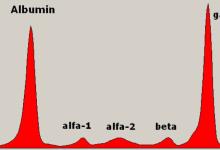Prescription Drugs and the Effect on Access to Biosimilars in the US Save
The word “access” is thrown around a lot these days, particularly regarding health care and specifically, prescription medications. Access to medications essentially revolves around two things - availability and affordability. Immediately, pharmaceutical manufacturers come to mind, as they are responsible for production and setting the list price. However, ultimate availability and affordability of medications is shared with another entity.
This final arbiter of access, one often overlooked, is the Pharmacy Benefit Manager (PBM). This player in the drug supply chain has managed to remain impervious and invisible until recently. PBMs are hired by third party payers/employers to handle pharmacy claims (Part D type of medications). What medication our patient takes, when they can get it, where they can get it, and how much the cost share will be for patients is essentially controlled by PBMs.
Their power resides in the fact that they control the formulary and determine the “preferred drugs” list. When the preferred list changes (even midyear), patients can be forced to switch medications because they can no longer afford the medicine that was dropped from preferred status (non-medical switching.) PBMs also set the patient’s copay/coinsurance and the pharmacy network. Ultimately, PBMs control the availability and patient cost-sharing of medications, in other words, access.
How does this relate to the uptake of biosimilars? An understanding of PBMs and the rebate system is needed to comprehend this relationship.
Pharmacy Benefit Managers
The pharmacy benefits for nearly 80 percent of insureds in the US are controlled by three traditional PBMs: Express Scripts, CVS Caremark, and OptumRx (United Health Care). Traditional PBMs not only adjudicate pharmacy claims but they also negotiate price concessions from drug manufacturers and construct the formulary based on those negotiations. In the 90’s the Federal Trade Commission ruled that pharmaceutical manufacturers could not own PBMs, ending entities like Merck-Medco. 1987 is an important date in PBM history. That year PBMs gained coverage under the “Medicare Anti-Kickback Safe Harbor” statute, allowing PBMs to take kickbacks aka “rebates” from suppliers without the threat of criminal charges. “Safe Harbor” has become a very important topic in today’s drug pricing/rebate debate. It should be stated that there are transparent, fiduciary, fee-only PBMs that operate in a different way than the traditional Big 3 model.
From “gag-clauses” and “clawbacks” to unfair generic price spreads, there are many behaviors by PBMs considered to be egregious. However, this discussion is limited to how traditional PBMs manipulate the formulary for profit (formulary exclusions, step therapy, non-medical switching) and incentivize higher list prices. This piece does not shift the blame of high prices from manufacturers to PBMs. It simply demonstrates that traditional PBMs are not innocent bystanders in the drug pricing debate.
Formulary Construction and the Rebate System
How is a formulary constructed? What determines the preferred drugs lists – those drugs that must be “failed first” before other medications will be paid for? Is it efficacy, safety, or even the lowest list price? Guess again… It is the size of the REBATE and other hidden price concessions and market share negotiations with manufacturers that ultimately determine who wins preferred status. This creates a bidding war among manufacturers to get coveted spots on the PBM’s formulary every 6-12 months. Those bids involve secret contracts with rebates, reclassification of fees and other manipulations that benefit the PBM and the “winning” manufacturer.
A rebate is a retroactive “chunk” of money that a drug maker agrees to pay a PBM each time a prescription is filled for their drug. The formula for determining a rebate is:
Rebate = List price x % discount x market share (# of scripts filled).
An increase in any one of those three variables betters the chance for preferred placement. Increasing the list price is often the easiest path to a higher rebate bid. Medications are denied preferred status and even dropped from formulary if their rebate contract is not sufficient or when the preferred drug’s manufacturer has exclusivity demands in their secret bid.
Manufacturers with high market share have a distinct advantage. Those drug makers can use the rebate on their high market share medication as a bargaining chip to obtain preferred status for other drugs they manufacture. Not only does the rebate system incentivize higher list pricing, it is rife with dubious practices that are not based on the welfare of the patient nor the health care system.
Normally increased numbers in competition will bring down prices. Paradoxically, the more manufacturers vying for preferred formulary placement, the higher the list price goes as contract competition ratchets up. Since patients often pay a coinsurance based on a percentage of the list price for specialty drugs, not the rebated price, this competition only serves to increase their cost sharing.
The average rebate to PBMs is approaching 50%. That number may be dropping as more insurance companies/employers demand rebates be passed back to them. PBMs are reclassifying rebates as various fees (in secret contracts with the manufacturers) that do not have to passed back. A template of an old Express Scripts contract was published on Axios.com detailing the fees that could be kept from the client. Express Scripts said that it was an outdated contract yet still forced Axios to take it down.
The Rebate System and Biosimilars
How does this relate to accessibility of biosimilars? PBMs make more money when the list price is higher. Not only are the rebates increased with higher list prices, but other fees based on a percentage of list price are also higher, from administrative fees, to price protection fees. Yes, PBMs make more money if the drug price goes up during the year! It appears that a lower list price decreases a drug’s “attractiveness” to the PBM.
We know that biosimilars have been fast tracked through the FDA because of the promise of a lower priced biologic. This lower list price and no market share automatically lowers their rebate, and decreases any chance of attaining a decent formulary status. Without formulary coverage, even at a reduced price, biosimilars are still too expensive for patients. The rebate system and the resulting lack of coverage may end up being the major obstacle to biosimilar uptake in the US.
Where do the rebate "savings" go?
PBMs claim they keep drug prices down and “save” the health care system billions of dollars in extracted price concessions from the pharmaceutical manufacturers. List prices are not going down. In fact, just the opposite. Just how much “savings” are PBMs accruing in price concessions from manufacturers? In 2016 it totaled nearly $130 billion and it continues to rise. (Citation: http://www.drugchannels.net/2017/06/new-data-show-gross-to-net-rebate.html)
Drug prices are not lower, insurance premiums are not lower and patient cost sharing is going up. So where are all of these “savings” going?
United Health Care (Optum Rx) is #6, CVS Caremark is #7 and Express Scripts #22 on the Fortune 500 list. Their profits are much higher than most drug manufacturers. Remember these PBMs do no research, produce no products, see no patients and take no responsibility for any harm their formularies may cause. They are only “middlemen”, very profitable middlemen.
How is this legal? Who regulates PBMs?
Many wonder how this rebate system is legal, considering it is basically kickbacks or “pay to play” that ensure medications a preferred spot on the formulary. While PBMs are protected under the “Medicare Anti-Kickback Safe Harbor” legislation, there is talk in Washington DC of removing the safe harbor protection.
The Federal Trade Commission regulates PBM in terms of anti-trust issues. They have been weak in this regard. There are four new commissioners on the FTC and perhaps this may change some of the rulings of the past. The Department of Justice has jurisdiction and will make the final decision on the recent proposed mergers of CVS Caremark & Aetna and Express Scripts & Cigna. Many think that this vertical integration of insurance companies and PBMs will only serve to make the PBM “black box” bigger and more powerful.
States are attempting to pass “step therapy”, “non-medical switching”, and transparency PBM laws. That legislation which will cover only “non-employer” based insurance plans. Employer based plans are federally regulated under ERISA laws. Additionally, PBMs have a very powerful trade/lobbying group, Pharmaceutical Care Management Association (PCMA), that is fighting fiercely against these state efforts. PCMA rivals PhRMA in its legislative influence on state and federal levels.
PBMs have been sued by patients and manufacturers for fiduciary irresponsibility and failure to meet contract obligations. In response PBMs continually claim that they are only “middlemen” with no fiduciary responsibility to anyone but their shareholders.
Summary
We have an upside down drug supply chain where higher list priced drugs are often preferred to lower priced ones. And biosimilars, which are supposed to be the answer to the high cost of biologics, are less preferred because of their lower price. Our drug supply channel is opaque and confusing and all of the players want to keep it that way. There is nothing wrong with companies making a profit. But this goes beyond profits to “profiteering”. One thing is clear - the traditional PBM model with its rebate/price concession system is structured to prioritize the interests of PBM’s shareholders over the health of patients and the entire health care system.









If you are a health practitioner, you may Login/Register to comment.
Due to the nature of these comment forums, only health practitioners are allowed to comment at this time.